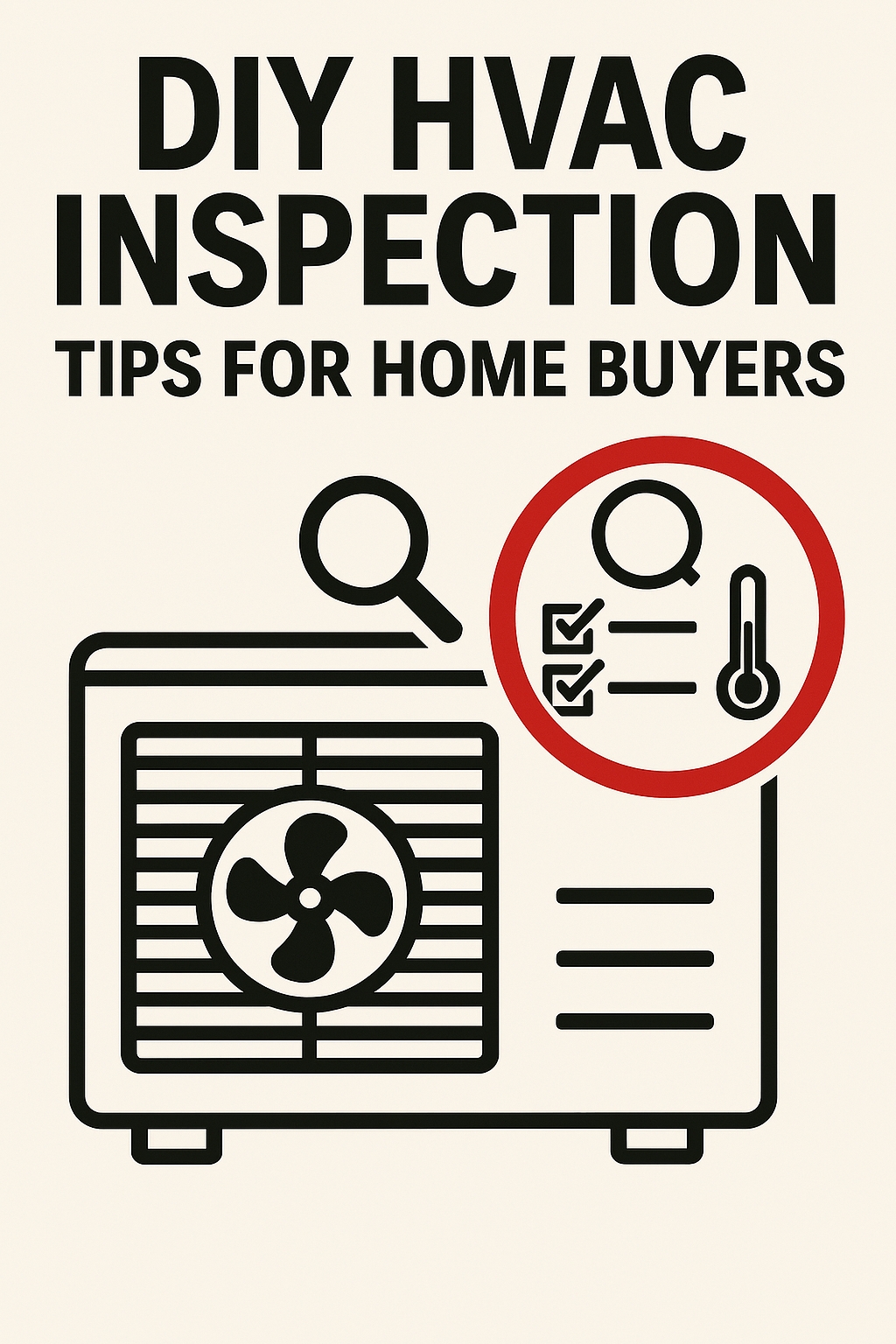Planning to purchase a new home? Before signing the deal, it’s crucial to check the HVAC system, including the furnace and air conditioner. These components can be costly to repair or replace. Conducting a DIY HVAC inspection before you move in helps ensure everything is functioning properly — and could save you from expensive surprises.
🔍 DIY HVAC Inspection for Home Buyers: Step-by-Step Guide
Use these practical DIY HVAC inspection tips to assess the heating and cooling systems. If you spot issues, you might negotiate repairs or a price adjustment with the seller.
🏠 Check HVAC System Location and Setup
Begin by identifying where the indoor and outdoor units are located. Ensure that the air handler isn’t installed in the attic, as leaks from this area can cause ceiling damage. Ideally, indoor units should be in the basement.
Also, evaluate the outdoor condenser’s location. Placing it near a bedroom window may result in unwanted noise, and in flood-prone areas, the unit should be elevated to prevent water damage.
👀 Visual HVAC Inspection Tips for Home Buyers
Once you’ve located the HVAC units, inspect them for the following:
- Overall condition: Check for any dents, rust, cracks, or visible wear. While some damage may be cosmetic, others might point to underlying problems.
- Ductwork: Round ducts are generally more efficient and quieter than rectangular ones. Make sure they are well-insulated and properly sealed to avoid air leaks.
- Gutter placement: Look for gutters above the outdoor unit. Proper drainage is essential to prevent rainwater from causing damage.
- Filter access: Ask how often the filters are replaced and how easy they are to access. Clean filters are vital for system efficiency and air quality.
❄️🔥 Test Heating and Air Conditioning Performance
Don’t hesitate to request a system test. Activate both heating and air conditioning to check if the temperature adjusts evenly throughout the house. Listen for unusual sounds like hissing or clanging, which may indicate underlying issues requiring attention.
📑 Review HVAC Age, Maintenance, and Utility Costs
Another essential part of your DIY HVAC inspection is checking the system’s age and service history:
- System age: Equipment older than 10 years may need to be replaced soon. Units beyond 15 years are typically due for an upgrade.
- Repair and maintenance history: Ask whether the HVAC system has been regularly serviced. Frequent repairs or lack of annual inspections may suggest declining reliability.
- Utility bills: Request past energy bills. Steadily increasing costs may signal an inefficient system or one that needs maintenance.
Check for R-22 Refrigerant Use
Find out which refrigerant the air conditioner uses. Many older systems still rely on R-22 (also known as HCFC-22), which was banned from production and import in 2020 due to its environmental impact.
If the unit runs on R-22, you can continue using it — but keep in mind that refrigerant supplies are limited, and future servicing will become more expensive. Eventually, you’ll need to retrofit the system or replace it.
👷 When to Call a Certified HVAC Technician
While a DIY HVAC inspection provides a solid starting point, hiring a licensed HVAC professional offers a deeper analysis. Certified inspectors can:
- Identify internal issues not visible to the untrained eye
- Evaluate duct sizing and ventilation layout
- Test indoor air quality
- Perform routine preventative maintenance
A professional assessment can give you more confidence in your decision — especially for older homes or complex systems.
🔁 Replace or Keep the HVAC? A Home Buyer’s Guide
Based on your DIY HVAC inspection and expert evaluation, decide whether to keep the current system or invest in a new one.
When to Replace:
- The system is over 10 years old
- It has major visible damage
- It requires frequent, costly repairs
- Energy bills from the previous owner were unusually high
- The system doesn’t cool or heat evenly
- It’s improperly sized for the home
When to Keep:
- Only minor wear is visible
- It functions well after a simple cleaning
- It’s less than 10 years old and generally reliable
✅ Final Thoughts on DIY HVAC Inspection Before Home Purchase
Doing a DIY HVAC inspection gives you a clearer understanding of the heating and cooling system’s condition before buying a home. From checking equipment placement and duct quality to testing temperature control and reviewing energy bills, each step empowers you to make a smarter home-buying decision. If anything seems off, always consult a licensed HVAC technician for peace of mind.
